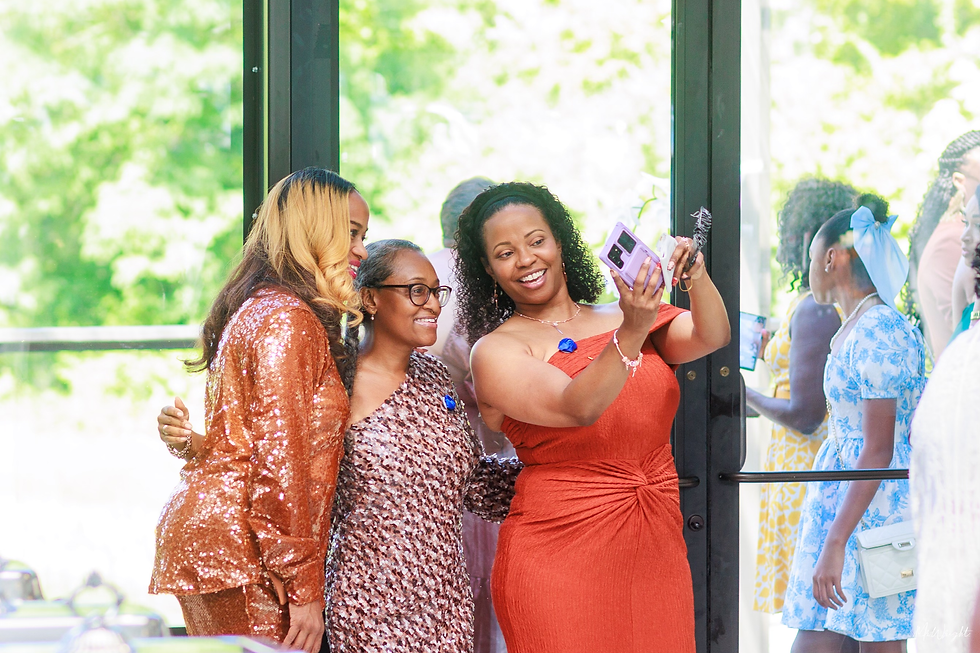The Rise of Rosie
- Chloe Price

- Oct 13, 2023
- 4 min read
Updated: Aug 3
Women have been changing the fabric of society for thousands of years. As far back as 1400 BC, women like Hatshepsut and Cleopatra were building and shaping the ancient civilization of Egypt, allowing arts communities to flourish. In the 1200s, Borte Ujin, wife of Mongol conqueror Genghis Khan, was his most trusted advisor and would rule as empress when he was away. Joan of Arc in 1425 began to hear voices she believed were sent from God telling her to join the French efforts to expel their enemies; she became a fierce leader and was sainted after her tragic execution. As Joan proves to us, women are especially adept at stepping up in times of great cultural crisis.

They become figureheads for bravery, independence,
and womanhood, and they are fueled by their love for family and community.
This was never more true than during the feminist movement of World War II, when women found a new autonomy in their homes, in the armed forces, and in the workforce. These women no doubt changed the course of the war as well as what people thought women were capable of, and thanks to their care and compassion, ensured their country made it out to the other side.
On September 1st, 1939, Germany invaded Poland and the Second World War began. This meant devastating things for communities everywhere. 50 million men were forced to sign up for the draft and before they could blink, they were swept overseas to fight a war they didn’t fully understand yet. Women left at home in the States were forced to become the sole head of their homes, join the workforce for the first time, or figure out a new normal if they learned their husbands were never coming home. 19-year-old Rosalind P. Walter got a job as a riveter on fighter planes at the Vought Aircraft Company in Connecticut and was featured in a newspaper article in 1942. Songwriters Redd Evans and John Jacob Loeb were inspired to write an upbeat swing song called “Rosie the Riveter”:
All the day long, whether rain or shine /
She's a part of the assembly line /
She's making history, working for victory /
Rosie, the riveter /
Keeps a sharp lookout for sabotage /
Sitting up there on the fuselage /
That little frail can do more than a male can do /
Rosie, the riveter /
This song struck a chord with America’s women, pun intended, as well as other artists. Norman Rockwell asked another 19-year-old named Mary Doyle Keefe to pose for a painting of Rosie as a strong woman in overalls holding a rivet gun that ended up on the cover of the Saturday Evening Post. Another illustration was created by J. Howard Miller and went on to become synonymous with the image of Rosie the Riveter in the public consciousness; a woman in overalls, a bandana, and red lipstick flexing her bicep with a speech bubble declaring,

“We Can Do It!”
This image became an empowering cry to women everywhere that they could make a difference despite the circumstances in which this war had placed them. A movement was sparked, and six million women struck out and found work in factories or volunteered with the Red Cross, and over 200,000 served in the military. Their work kept wartime supplies going overseas, and the sick and wounded were cared for. Vulnerable communities were able to support their children and keep their homes thanks to women’s bravery and capable hands.
Rosie’s message seemed to resonate with the queer community as well. Queer women were suddenly given an opportunity to join the armed forces and climb their ranks, and many did. The Women’s Army Auxiliary Corps was signed into existence by President Roosevelt in 1942 and under the direction of Oveta Culp Hobby, over 150,000 women signed up to work as clerks, typists, drivers, cooks, and even unit cadres, who trained other members. Two of those women were Phyllis Abry and her partner Mildred, who were photographed and featured in WAAC propaganda as the ideal image of women in the service. The Army didn’t know at the time their icons were a queer couple. Young gay men found ways to feel at home while serving overseas as well; finding themselves away from their oppressive communities for the first time, they found community and camaraderie in each other. A show entitled “This is the Army” featured soldiers representing female characters and wearing makeup, elaborate costumes, and heels, becoming the army’s own drag shows. It’s worth noting that the sudden onslaught of women enlisting in the military and some more masculine women thriving in jobs traditionally done by men shifted the public consciousness on gender roles and sexuality.
Many women came home from these appointments emboldened to break away from their communities, change their roles in their homes, and start educating each other on how to grow.

Despite the conditions war forced these people into, they found ways to flourish and improve their communities, and in some cases even subvert the public consciousness of misogyny and bigotry. Women were now a common part of the workforce, and this would not change after the war ended. This began a long journey to shift the expectation that women could only be housewives and caretakers and allowed them to climb the ranks in their chosen fields and become respected professionals as well as loving and caring for their families. Our image of Rosie the Riveter represented this newly empowered and confident woman; she didn’t have to sacrifice her femininity, she could be strong and take charge, and there was a larger community of these like-minded women who could, and would do amazing things together.
Written by Chloe Price. Chloe and Kat styled and photographed by Kaylee Williamson. Hair and makeup by Chie Sharp.
















Comments